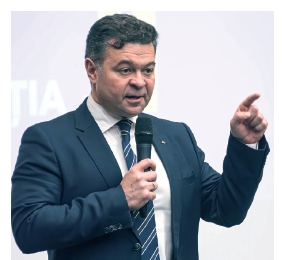The Romanian research system, connected to European reforms

But in order to mitigate the diagnostic somewhat, we must mention that this globalizing shift has had a powerful effect even on nations that are far more developed, forcing them to push through ambitious reform programs. France, for example, is in the final stages of a deep reform of its higher education and research system. The Italian government has recently pushed through partial, but important reform. Portugal has implemented, with remarkable speed and effectiveness, a reform of higher education which has been commended in an OECD report. But even closer to us, Poland is also in the midst of a deep reform of its higher education and research system. As we will argue, all these reforms converge to the same basic principles, which the National Authority of Scientific Research (NASR) is committed to implementing, since the beginning of 2010.
The main axes of reform
The principles that form the foundation of the current reform have been mentioned in the past, in various reports, political pacts, or internal or international analyses. The first is concerned with a leveling of the playing field in order to truly open the competition for public funds: the funds follow the performance. The research budget is not a welfare mechanism, intended as a life support system for institutions that have been obsolete for decades. The resources must be concentrated where they can produce results, synergies, and where they can help reach the critical mass which is necessary for major new research ideas to come to life. The second principle is reducing the bureaucracy and accelerating the process of decentralization, in order to eliminate some of the main obstacles in a researcher's day to day work. The third principle is to internationalize the research system, lure back human resources from the diaspora, stimulate collaborations with foreign research teams and absorb more European funds. Lastly, but perhaps most importantly, we must stimulate the collaboration between the public research system and the industry.
In the following, I will emphasize some of the main changes we have introduced in each of the above four directions. Most of them have close equivalents in other countries, especially France and Poland, and are found among the recommendations of independent studies such as the one commissioned by the European Commission (the INNOVA report).
1.Concentration of resources

Parerea ta conteaza: 
































 UVT, catalizator al mișcării academice timișorene, își urmează calea spre cunoașterea aprofundată și trecerea către tehnologiile viitorului și ale noilor generațiiUniversitatea de Vest din Timișoara este astăzi cea mai dinamică instituție de învățământ superior din România, o universitate care se...
UVT, catalizator al mișcării academice timișorene, își urmează calea spre cunoașterea aprofundată și trecerea către tehnologiile viitorului și ale noilor generațiiUniversitatea de Vest din Timișoara este astăzi cea mai dinamică instituție de învățământ superior din România, o universitate care se...










